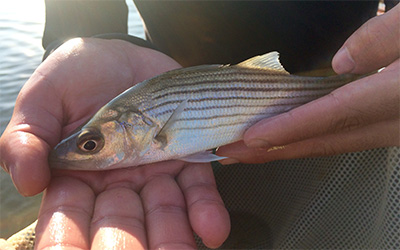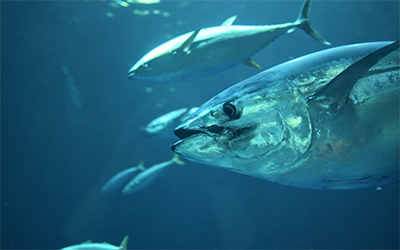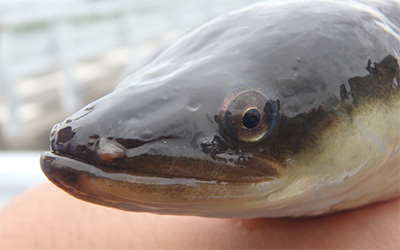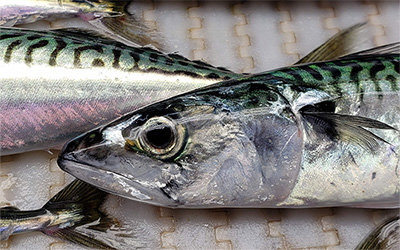RESEARCH
CURRENT PROJECTS
Using strontium isotopes to assess portfolio effects in Californian Chinook salmon
Research
01Central Valley (CV) Chinook salmon (Oncorhynchus tshawytscha) from the Sacramento-San Joaquin River system (USA) forms the backbone of a large ocean salmon fishery in California. However, little is known about the population composition and abundance of juveniles leaving the freshwater Delta and entering the San Francisco Estuary, a gauntlet that all CV salmon populations must transit in order to reach the ocean. We used otolith strontium isotope ratios (87Sr/86Sr) to understand the life history patterns and origin of juvenile fall-run Chinook salmon under contrasting climate regimes. We used time series analyses and assignment models for natal-origin assignment, size at natal river exit, duration of freshwater rearing, and population composition estimates. We will explore shifts in composition and life history diversity over time, and test whether contributions from different populations displayed asynchronous dynamics.

Partial migration of Hudson River striped bass
Research
02Striped bass (Morone saxatilis) is widely distributed throughout Atlantic US and Canada, supporting one of the most important commercial and recreational fisheries in US Atlantic waters. Striped bass exhibit partial migration during their early life stage, whereby a portion of individuals remain in freshwater habitats, while the other portion moves into brackish water habitats. We used otolith chemistry/microstructure and time-series analysis to better understand the causes and consequences of partial migration of juvenile striped bass in the Hudson River.
Papers from this project are currently in review or in prep.

PREVIOUS PROJECTS
Assessing Slope Sea recruitment for western Atlantic bluefin tuna
Research
01Atlantic bluefin tuna (Thunnus thynnus) is a valuable species harvested throughout the North Atlantic and marketed and consumed around the globe. The western stock of Atlantic bluefin tuna receives recruits principally from spawning habitats in the Gulf of Mexico although the recent discovery of bluefin tuna larvae in the western North Atlantic Slope Sea calls into question whether there is another key source of recruits to the western stock. We tested whether age-0 juveniles occurring in the US Mid-Atlantic Bight might originate from Slope Sea spawning by estimating the hatch date distribution based on otolith microstructural analysis.
The results of this work were published in Fisheries Research.

Natural distribution of Japanese eel
Research
02Japanese eel (Anguilla japonica) is a catadromous species that are commercially important in Asia, although numbers have substantially declined since the 1970s. Understanding the distribution range of wild eels (i.e., naturally recruited individuals) represents the first step in conservation efforts, although stocking cultured eels throughout the waters of Japan masks the “natural” distribution range of wild eels. We applied a classification model based on otolith oxygen and carbon stable isotopes (δ13C/δ18O) to determine the distribution range of wild eels throughout the Tone River watershed, the largest fisheries ground for this species.
The results of this work were published in Environmental Biology of Fishes, Journal of Fish Biology, and Fisheries Science.

Stock mixing and spatial structure of Northwest Atlantic mackerel
Research
03Atlantic mackerel (Scomber scombrus) is a dominant pelagic schooling species in the Northwest Atlantic comprised of northern and southern components that have distinct spawning sites off Canada (northern contingent) and US (southern contingent), and seasonally overlap in US fished regions. We used otolith oxygen and carbon stable isotopes (δ13C/δ18O) and applied a multi-model machine learning ensemble classifier to assess contingent mixing within US waters over the past five decades (1975–2019). We also generated otolith oxygen isostope landscapes (“isoscapes”) across the Northwest Atlantic to assess the geographical natal origin of Atlantic mackerel.
The results of this work were published in Scientific Reports. The isoscape paper is currently in review.


